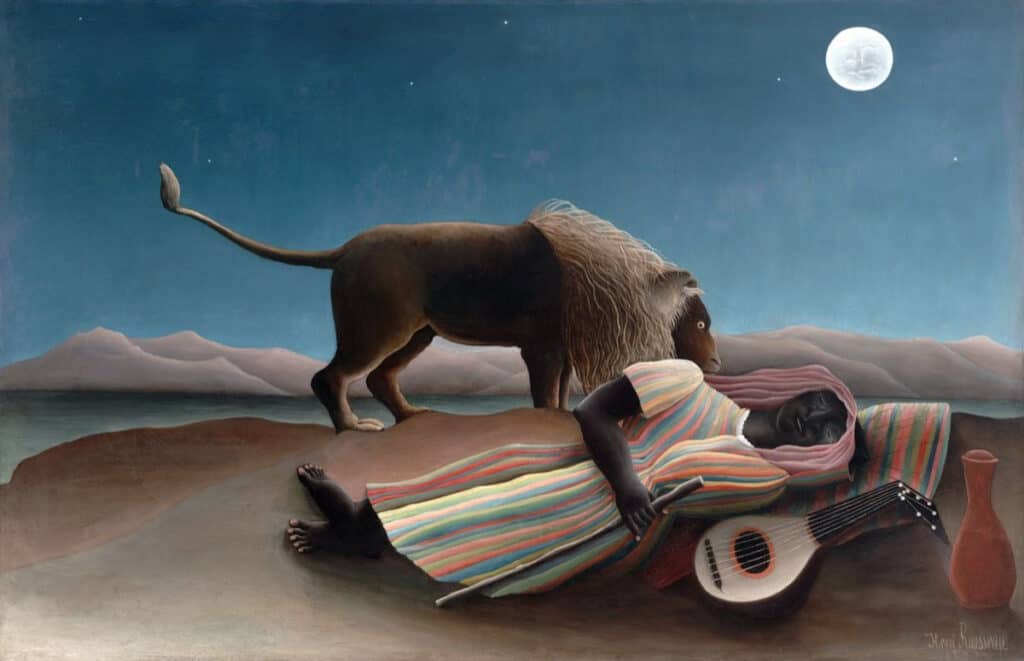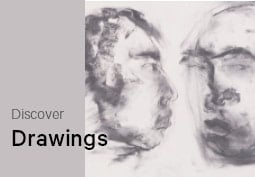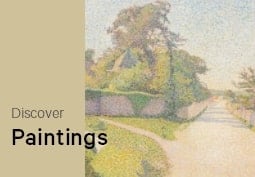Articles and Features
The Art of Depicting Dreams.
How Dreams – and Nightmares – Have Influenced Art History
By Shira Wolfe
“Every act of imagination points implicitly to the dream… the dream is the first condition of its possibility.”
Michel Foucault
Michel Foucault posits that dreams are the starting point of the imagination. Indeed, throughout history, countless artists have taken inspiration for their art from dreams. During the Renaissance, artists often represented the subject of the Biblical dream, the divine vision communicated by God, while the 19th-century Symbolists chose to express subjective psychological and spiritual states through dreams, and the Romantics expressed feelings verging on the mystical, often through visions and dreams. The Surrealists, in turn, used images and stories that came to them in dreams to create wild, bizarre artworks reflecting their subconscious states, as a window into their deepest selves. We take a tour of artworks influenced by dreams throughout the history of art.
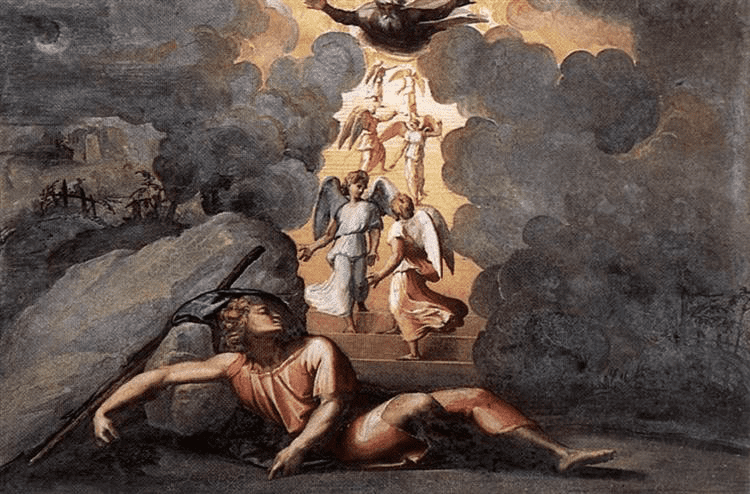
1. Raphael, Jacob’s Dream, 1518
In the Renaissance, dreams were depicted in art strictly as a religious experience. Biblical stories in which people had dreamlike visions and encountered higher beings and divine revelations through dreams were popular topics for artists. Raphael’s Jacob’s Dream (1518) is one such depiction of a divine vision: Jacob encounters God in a dream as he journeys out of the promised land. In the dream, Jacob sees a ladder reaching up to heaven, and the angels of God are ascending and descending it. God stands beside Jacob and tells him he is the chosen one, and that he and his offspring will return to this land and the land will belong to them. In Raphael’s painting, we see Jacob sleeping with his head on a rock and God hovering above the angels, dark clouds parting on either side to reveal the golden light of heaven. Jacob may be fast asleep, but the composition of the painting with God and the angels taking centre stage ensures that we understand this dream as a very real vision.
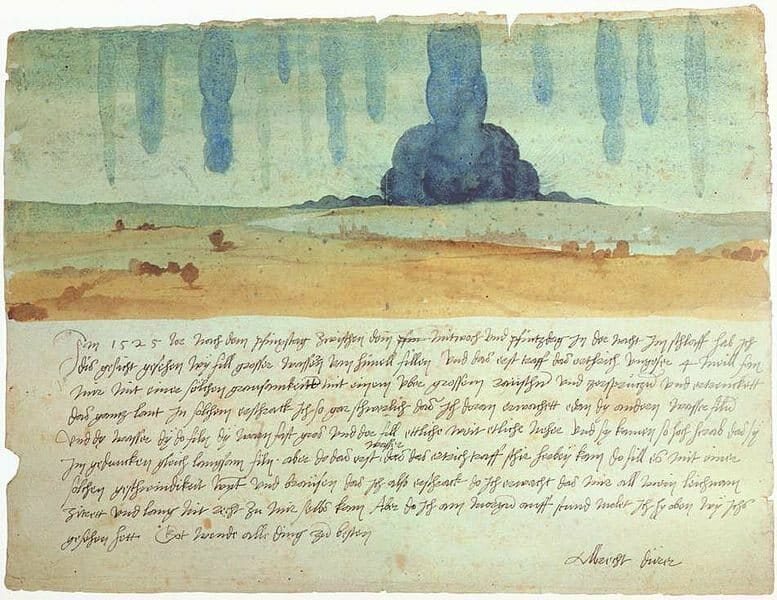
2. Albrecht Dürer, Dream Vision, 1525
One of the first artists to actually paint a dream of their own as opposed to divine visions was Albrecht Dürer. His watercolour painting Dream Vision from 1525 was inspired by a dream he had on June 7, 1525. The dream consisted of a flood which he described as great waters falling from heaven, accompanied by wind and roaring. Dürer was greatly affected by the dream, reporting afterwards: “When I awoke my whole body trembled and I could not recover for a long time.” He painted this watercolour very quickly in order to remember the dream, filling half of the page with his written explanation of the dream.
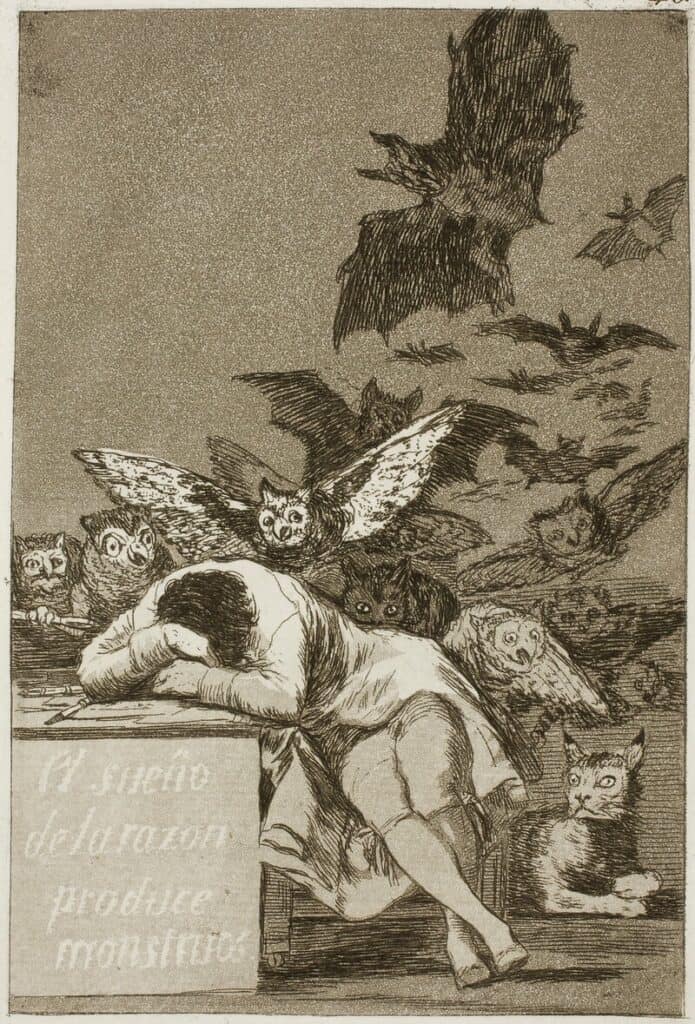
3. Francisco Goya, The Sleep of Reason Produces Monsters, 1797-1799
Francisco Goya did several series of etchings during his career. The Sleep of Reason Produces Monsters is the 43rd etching in his Los Caprichos series, which presented dark satires of eighteenth-century Spain. In this etching, Goya depicts the sleeping artist as the Enlightenment value of Reason, which he asserts is necessary to fight evil. The figure’s peaceful sleep is interrupted by the predatory monsters attacking him from all around, representing pre-Enlightenment superstitions and practices that Goya felt held the country back from modernization and progress. Goya believed that he, “like mankind in general, [could] only overcome superstition, ignorance, and irrationality by uniting reason with fantasy.” The dream and the dreamer therefore presented a perfect vessel for Goya’s message.

4. William Blake, Visionary Heads, 1818
The English poet and painter William Blake made a series of black chalk and pencil drawings starting in 1818 at the request of the artist and astrologer John Varley. Varley believed in the existence of spirits, but was frustrated that he could not see them. Blake claimed to have daily visions since childhood, and so the two started working together to summon spirits. The subjects of the Visionary Heads drawings are what resulted from these meetings: historical and mythical characters that appeared to Blake in visions during his nights with Varley. Some of the characters that together make up the Visionary Heads include David, Solomon, Bathsheba, Job, Socrates, Julius Caesar, Christ, Muhammad, Merlin, John Milton, Voltaire, and Satan. The most famous in the series is The Ghost of a Flea, a miniature painting inspired by a vision Blake had during a session with Varley. The muscular, nude flea is depicted with its tongue sticking out of its mouth, about to feast on a bowl of blood.
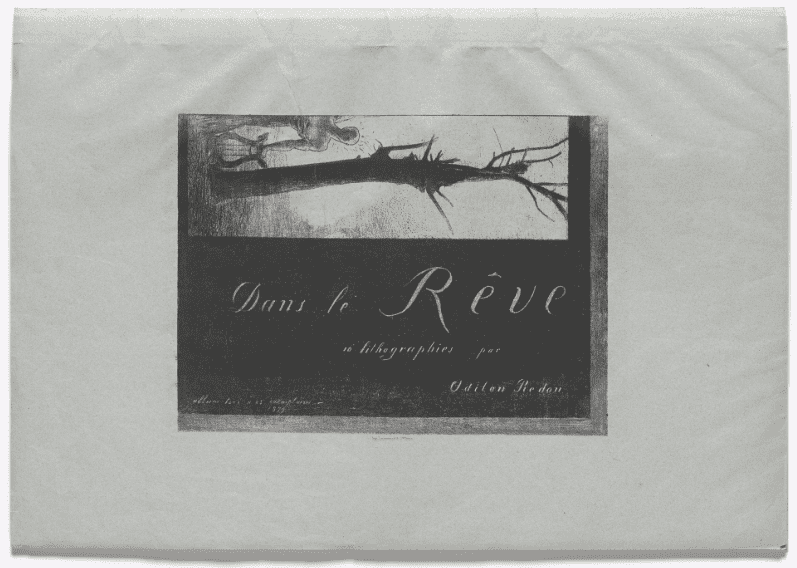

5. Odilon Redon, In the Dream, 1879-1899
Symbolist artist Odilon Redon was once nicknamed the “king of dreams” by art critic Thadée Natanson, as he often depicted scenes from the depths of his subconscious and inner worlds. Redon’s paintings are sensual evocations of his experiences and feelings related to the mysteries of nature. In a series of lithographs, the Noirs, which he created between 1879 and 1899, Redon depicted a terrifying world of hybrid creatures seeming to have appeared out of a nightmare. Images include a spider with the face of a human and a giant flying eyeball. Though he initially created art almost exclusively in black and white like with the nightmarish Noirs, Redon turned to pastels in the 1890s, feeling comforted by the colours. These blurry, colourful paintings came to define Redon’s dreamy painterly style, moving his art from the realm of the nightmare to the realm of the dream.
“I believe in the future resolution of these two states, dream and reality, which are seemingly so contradictory, into a kind of absolute reality, a surreality.”
André Breton
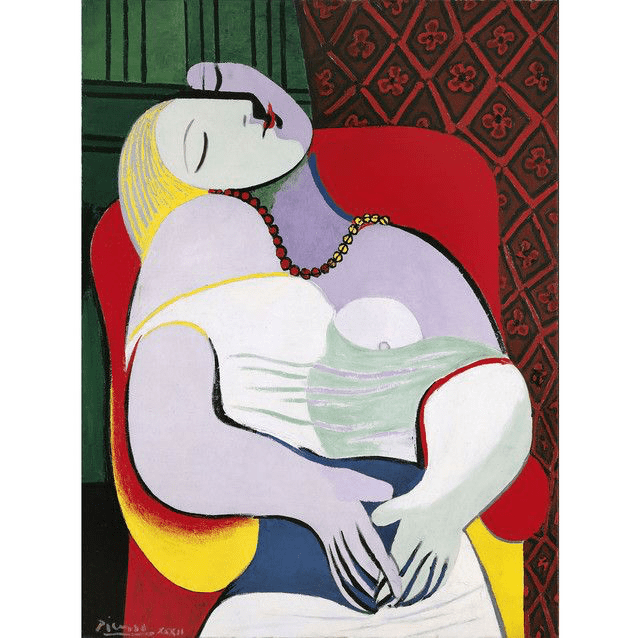
6. Pablo Picasso, The Dream, 1932
Perhaps less inspired by an actual dream than by Picasso’s dreamy state of new love and lust, The Dream is a 1932 painting of Picasso’s young lover, Marie-Thérèse Walter, who was 22 years old at the time. She is depicted with her eyes closed, caught in the middle of a sensual daydream. Picasso’s erotic passion for Marie-Thérèse is written all over the painting: he painted part of her face in the shape of an erect penis, and her hands come together in her lap to form the shape of a vagina.

7. Joan Miró, Dream Paintings, 1925-1927
Joan Miró had a particular approach to the influence of dreams on his life and art, saying: “I never dream… Oh, yes! I do dream, I dream when I’m walking down the street, I dream all the time, but these dreams aren’t Freudian dreams. They are waking dreams. I’m always in a state of dreaming while awake. Of course! But dreams while I’m asleep, no.” Miró, then, embarked on his own particular journey to express himself, through a permanent state of alertness and automatic painting. The approximately 100 paintings that Miró created between 1925 and 1927 are known as his “Dream Paintings”. The dream is evoked here, but not literally depicted. The paintings in this dream series often combine recognisable imagery with opaque shapes set against monochromatic backgrounds. In Photo: This is the Color of My Dreams (1925), for example, Miró painted a little dab of blue on a monochrome beige background, and underneath the blue he wrote: “ceci est la couleur de mes rêves”, meaning “this is the color of my dreams”.

8. René Magritte, The Key to Dreams, 1930
René Magritte is known for displaying ordinary objects in an unusual context, much like what happens when we are dreaming, thus giving new meanings to familiar things. His Surrealist artworks have an illusionist, dreamlike quality and his tendency to juxtapose seemingly unrelated objects in the same painting was for him a means of evoking the essential mystery of the world. In his six-panel image Key to Dreams (1930), Magritte uses simple images (an egg, a shoe, a hat, a candle, a glass and a hammer) and matches them with absolutely unrelated words (acacia, moon, snow, ceiling, storm, desert). The title of the painting points to the fact that we must look beyond the images to deeper layers of meaning in our subconscious, and invites us to consider the relationship between art, language and reality.
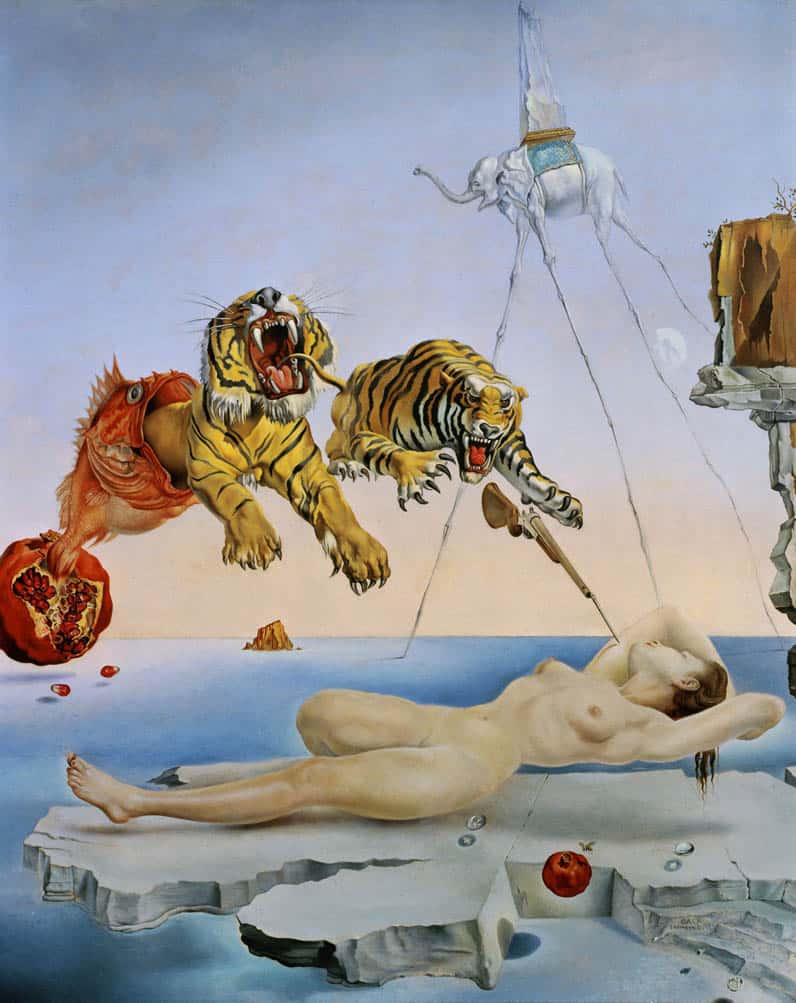
9. Salvador Dali, Dream Caused by the Flight of a Bee Around a Pomegranate a Second Before Awakening, 1944
Another Surrealist master of dreams, Salvador Dalí, loved creating wild and wonderful paintings that combined the most bizarre images mixing the world of dreams with his psychedelic vision of reality. Dream Caused by the Flight of a Bee Around a Pomegranate a Second Before Awakening from 1944 depicts Dalí’s wife and muse Gala, asleep and levitating above a rock by the sea. A yelloweye rockfish comes bursting out of a pomegranate hovering above the sea, while two tigers are about to pounce on the peacefully dreaming Gala and a bayonet, representing a stinging bee, is about to sting Gala awake. Dalí later said of this painting that it was intended “to express for the first time in images Freud’s discovery of the typical dream with a lengthy narrative, the consequence of the instantaneousness of a chance event which causes the sleeper to wake up. Thus, as a bar might fall on the neck of a sleeping person, causing them to wake up and for a long dream to end with the guillotine blade falling on them, the noise of the bee here provokes the sensation of the sting which will awaken Gala.”
10. Jasper Johns, Flag, 1954-1955
In 1954, two years after Jasper Johns had been discharged from the US Army, the artist woke up from a dream in which he painted a large American flag. He immediately got out of bed, went out and bought the materials to start making the painting from his dream. Before painting Flag (1954-1955), Johns had been trying to move to a new level in his artistic life by destroying all the existing work in his possession. The dream marked a new beginning, which led to him painting a series of over 40 flag paintings. For Johns, the painting of a familiar object like the American flag offered a sense of freedom since he did not have to occupy himself with creating a new design, but could rather focus on the execution of the painting.
Relevant sources to learn more
MoMA
Kröller-Müller Museum
Metropolitan Museum of Art
Read more about Surrealist artists and their use of dreams here.
Read more about Symbolism and the influence of dreams and the subconscious here.
Discover more about Jasper Johns and his obsession with painting flags here.
